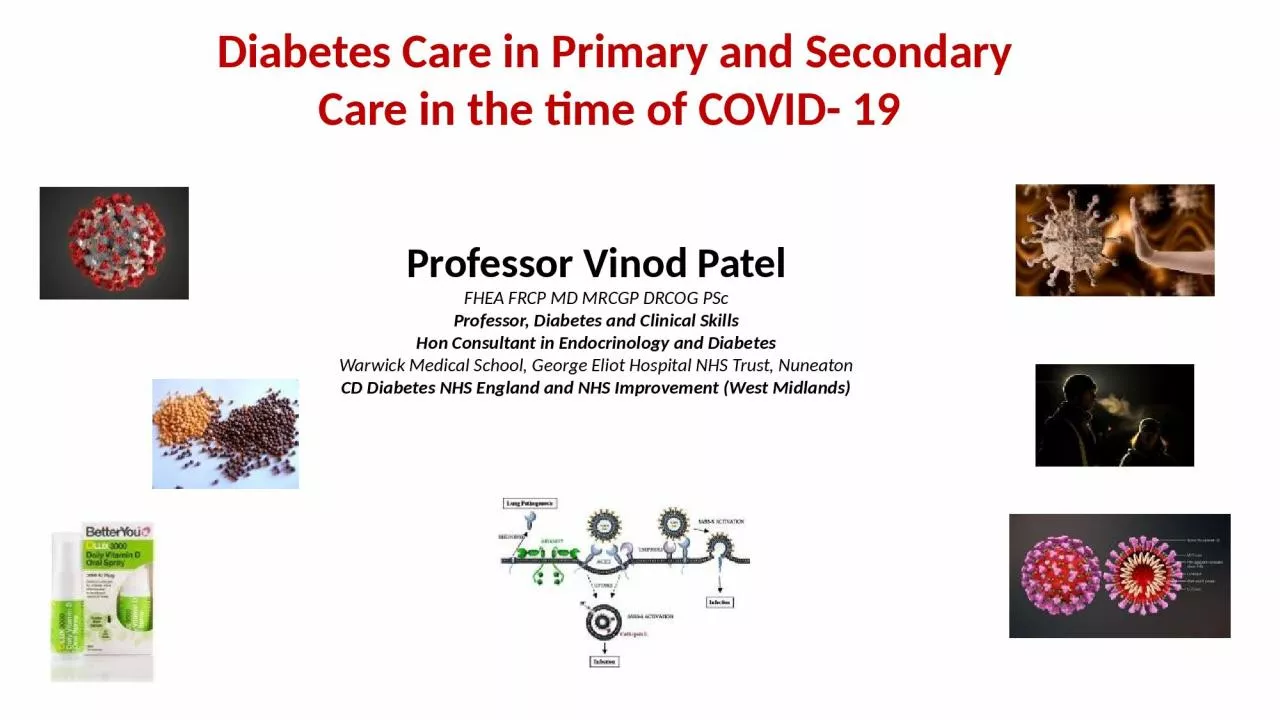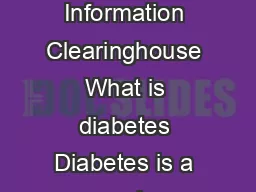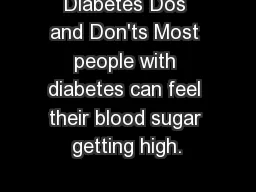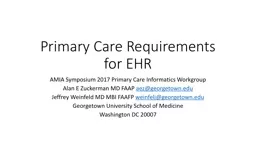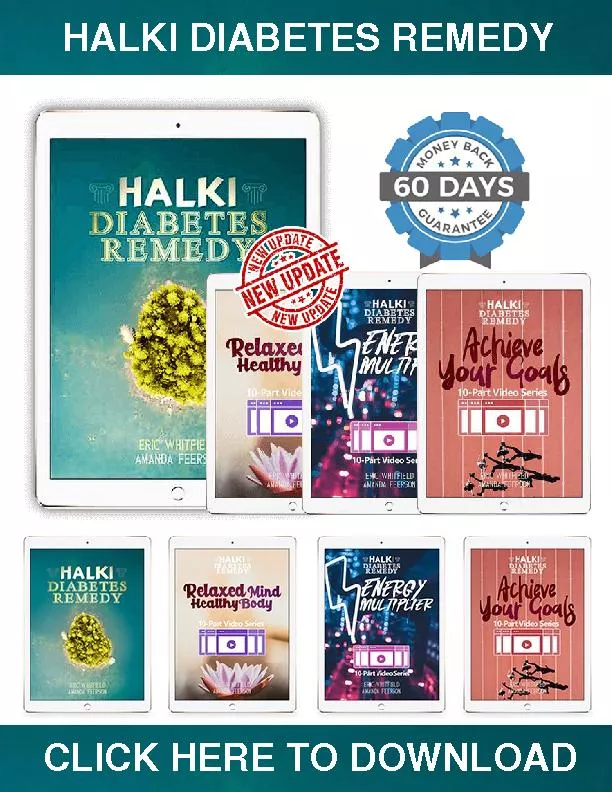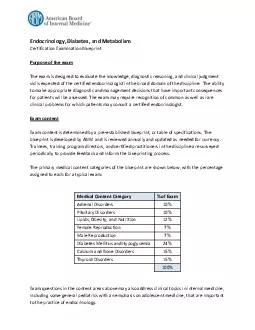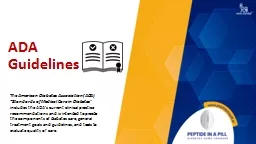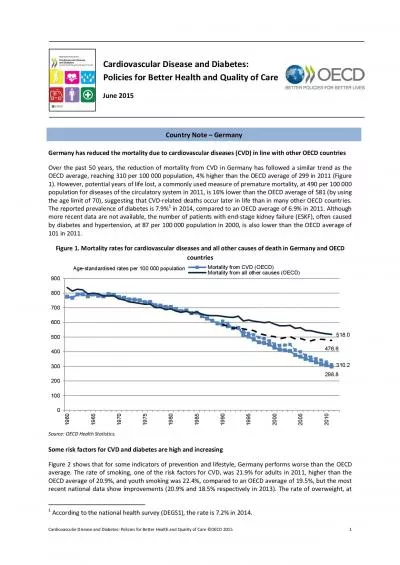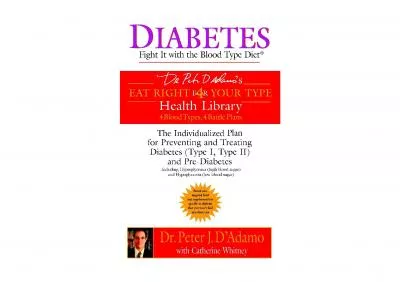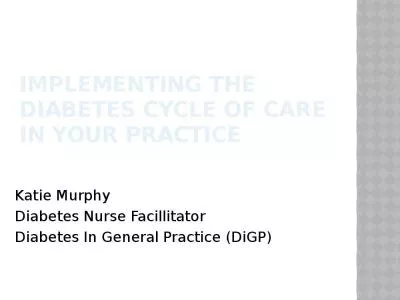PPT-Diabetes Care in Primary and Secondary Care in
Author : bety | Published Date : 2022-06-11
the time of COVID 19 Professor Vinod Patel FHEA FRCP MD MRCGP DRCOG PSc Professor Diabetes and Clinical Skills Hon Consultant in Endocrinology and Diabetes Warwick
Presentation Embed Code
Download Presentation
Download Presentation The PPT/PDF document "Diabetes Care in Primary and Secondary ..." is the property of its rightful owner. Permission is granted to download and print the materials on this website for personal, non-commercial use only, and to display it on your personal computer provided you do not modify the materials and that you retain all copyright notices contained in the materials. By downloading content from our website, you accept the terms of this agreement.
Diabetes Care in Primary and Secondary Care in: Transcript
Download Rules Of Document
"Diabetes Care in Primary and Secondary Care in"The content belongs to its owner. You may download and print it for personal use, without modification, and keep all copyright notices. By downloading, you agree to these terms.
Related Documents

